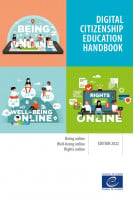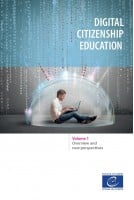Report on children with disabilities in the digital environment: children with disabilities reveal their experiences in the digital environment
The report describes the experiences of children with intellectual, physical, hearing and visual impairments. It analyses the challenges they face and provides recommendations to the States, digital industry, health services and academic institutions on how to ensure the safe access to the digital environment for these children.
Young people throughout Europe are growing up in a digital world, with one in three Internet users worldwide being under 18 years old. The digital and online lives of children with disabilities are very similar to those of children without disabilities, and they almost never disclose their disability online, the survey found. Their experiences in learning and spending leisure time online are hugely diverse and include playing musical instruments, cooking and gardening.
However, while benefiting from the digital environment, such children can also be disproportionally disadvantaged, even if they do not consider themselves more exposed to potential online risks than their peers without a disability. This calls for far greater attention to be paid by governments, the digital industry, schools and healthcare services to the rights of children with disabilities.
EXECUTIVE SUMMARY 1. INTRODUCTION 2. RESEARCH METHODS 3. MAIN FINDINGS
3.1 Children’s experiences in the digital environment
3.2 Diversity
3.3 Digital dividends
3.4 Digital disadvantage
3.5 Discontinuity and disruption
3.6 Disclosing a disability
3.7 Dealing with danger
3.8 Decision-making
4. CONCLUSIONS AND RECOMMENDATIONS
4.1 Government action
4.2 The digital industry
4.3 Academic institutions and schools
4.4 Health services
APPENDIX 1: PARTICIPANT MATRIX APPENDIX 2: FOCUS GROUP SCHEDULE










